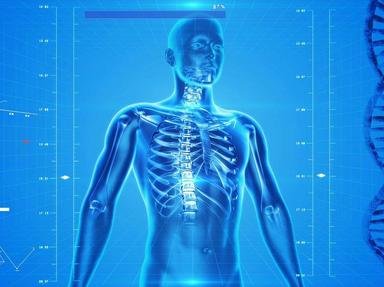Quiz Answer Key and Fun Facts
1. Which part of the body has no blood supply and gets oxygen directly from the air?
2. What's the strongest muscle in the human body by force exerted?
3. Which bodily organ can regenerate itself like a lizard's tail?
4. What's the only human body part incapable of self-repair?
5. What part of the body has the highest concentration of sweat glands?
6. What's the only bone in the human body not connected to another bone?
7. Which internal organ is the most energy-consuming?
8. Which of these body parts appears to continue growing, even in old age?
9. What rare condition can cause a person's skin to turn blue?
10. Which of these is the fastest reflex action in the human body?
Source: Author
Kalibre
This quiz was reviewed by FunTrivia editor
rossian before going online.
Any errors found in FunTrivia content are routinely corrected through our feedback system.
